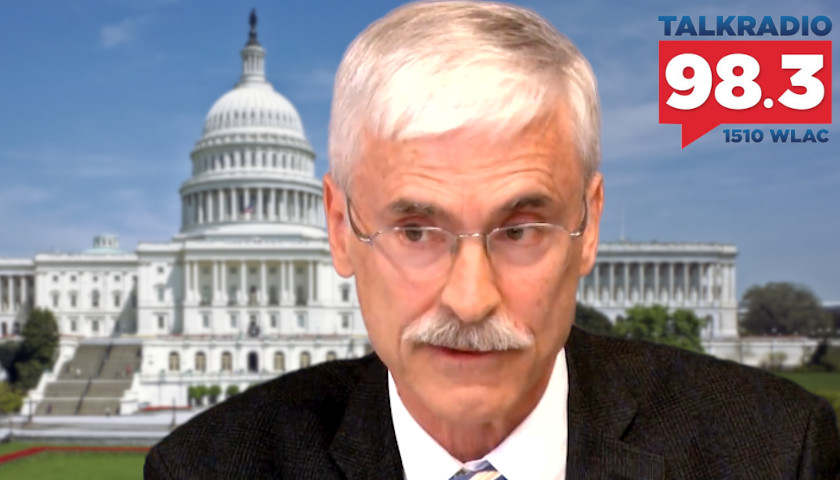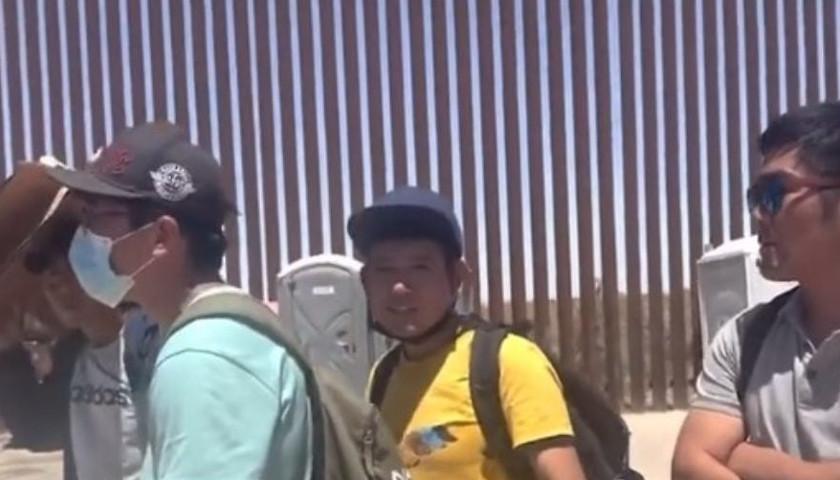On Tuesday’s Tennessee Star Report with Michael Patrick Leahy – broadcast on Nashville’s Talk Radio 98.3 and 1510 WLAC weekdays from 5:00 a.m. to 8:00 a.m. – Leahy welcomed Don Barnett in the studio to talk about immigration and refugee policy and repercussions.
During the second hour, Barnett explained the inner workings of refugee resettlement and how Trump’s executive order, which was designed to achieve cooperation from both state and county level, has loopholes. He went on to describe how aside from federal refugee agencies there were other private contractors letting in even more without the public’s’ knowledge.
Leahy: I’m delighted to welcome to our microphones. A good friend for a long time, a fellow with the Center for Immigration studies, and also a resident of Williamson County, Don Barnett. Good morning Don.
Barnett: Good morning Mike.
Leahy: It is great to have you here. And what a treat it is to have an expert on the issue of immigration and refugees. And you’ve been writing about this for decades haven’t you?
Barnett: Too many decades.
Leahy: But you know what you’re talking about which is really, really good. Of course the issue of refugee resettlement. This is an issue that you and I have reported on and covered. And you’ve done the in-depth analysis that so many reporters have relied upon.
And of course, I covered it at Breitbart. And then we at The Tennessee Star have covered it. And now, Governor Lee has kind of stepped into it. Hasn’t he? At least that’s my characterization.
Barnett: He certainly raised the profile of it in Tennessee.
Leahy: He has. And we had a story yesterday of in-depth analysis about the process and the Gov. Lee’s decision to say yes to more refugees in essence, if we can do the background on it. The Refugee Act of 1980 was when this was established right?
Barnett: Right.
Leahy: I think since then we’ve had about three million refugees that have been settled?
Barnett: Approximately three million. And it’s important to remember that there’s a number of other humanitarian immigration programs that bring in very large numbers. Asylum.
Leahy: In addition to the refugee program. It’s hard for me to remember them all.
Barnett: Special immigrant visas. Some of these programs have backed off a little bit recently. But we’re still bringing in approximately 220,000 per year that are immediately eligible for welfare on the same basis as a US citizen just because of their status.
Leahy: So you’ve said something very important here and it’s confusing out there. But the president set a cap for refugees.
Barnett: Right.
Leahy: This fiscal year of 18,000. But these other programs you’re talking about, special immigration visas. The asylum for Cuba and Haiti. There’s another 200,000 that are coming in under those programs right?
Barnett: Right. And they have the exact same rights as refugees which are essentially the same right there to have instant access to all forms of welfare. Also, we have about 60,000 or more than 60,000 actually unaccompanied children coming in. Children that are just tossed over the border.
Leahy: The DACA deal?
Barnett: New DACA possibilities. I mean literally 60,000 at least a year coming into the so-called unaccompanied alien children program. Which is a $1.3 billion annual program.
Leahy: And that’s a program that wasn’t established by a statute but was established by Barack Obama’s executive order. Am I right on that?
Barnett: There is some statutory code around unaccompanied children but it’s defined largely by regulation and order yes.
Leahy: So President Trump when he was running for President, just to put this in context. There are multiple programs where people are coming in legally. And the refugee program is one of those and the one that has the most publicity.
Barnett: But it’s actually one of the smallest now because Trump lowered the quota.
Leahy: Before President Trump and the last full year of President Obama, there were about 90,000 refugees that were legally settled in the United States in the fiscal year 2016. President Trump running for president made it clear that he was going to A, reduce the number of refugees coming in.
B, eliminate or largely reduce the number of refugees coming from hotbeds of terrorism like Somalia, and the Sudan and Iraq and Iran. And, also the other element which we’ll talk about right now is he went ahead and said, look. I’m going to basically say that only refugees be resettled if the state government and local government sign off to that resettlement. And that’s the issue we’re talking about right now.
Barnett: Correct.
Leahy: Gov. Lee, in his wisdom and ignoring the will and the wishes of the Tennessee General Assembly which filed a lawsuit in 2016 to stop this, said, “Oh bring them on in!” And that’s what has caused all the problems of late.
Barnett: As the executive order is structured, there has to be consent from the counties as well.
Leahy: But Gov. Lee doesn’t think that’s the case at least from what I’ve read.
(Commercial break)
Leahy: The lead story today is that five counties in Tennessee are considering saying no to refugees. And just explain to our listening audience that counties under the executive order have a right to say no.
Barnett: Right. As the order is structured if the state at the state level says no. Which it doesn’t look like any states are going to do except for Texas.
Leahy: And I think Florida.
Barnett: And maybe Florida. The two big receivers of refugees. If the state says no. Then that’s it. No county can sign on. But if a state says yes, a county on a case by case basis can say no in writing. I’ve actually been told it’s not clear yet. Supposedly if you say nothing it implies a no. But other people are telling me that the way it’s going to be eventually written is that it will require something in writing.
Leahy: See, this is a very interesting situation and it gets down to one of my pet peeves. The usurpation portion of the executive branch by the deep state. Stay with me here a little bit about this. Donald Trump promised on the campaign that no refugees will be resettled in a state or locality that doesn’t want them.
Barnett: That doesn’t want them.
Leahy: That doesn’t want them. That seems common sense to me. And then in September, he writes an executive order unless both the state government and the county government consent in writing. OK, so that seems pretty obvious. But, here comes the rest of the story and a lot of the problem on this…
So the bureaucrats that run this in the state department and health and human services. There’s a little agency called the Bureau of Population and Refugees and Migration. And you know a lot of people there. And some of those people have been part of a revolving door shall we say.
The voluntary agencies that get paid to resettle these folks they kind of move back and forth between the state department and these agencies. So there’s a concern over that. They seem to write the regulations or the guidance in a way that helps the voluntary agencies and doesn’t seem to really implement either the law or the executive order.
So the guidance that came out in November was instead of the president saying acceptance has to be consent given in writing by both county and state. The bureaucrats say well it’s only the governor that has to say yes. And they do sort of imply that they’ll talk to the counties. But that regulation doesn’t seem to implement the executive order. Do I have that right? It’s very complex but try to explain that.
Barnett: It’s complex and it’s still being formed is the fact of the matter. The way it is written if you say nothing then that’s an implied no. However, at the county level, they are probably going to make the counties do an explicit no if they want no instead of remaining silent. The way the executive order is written.
Leahy: But the way the bureaucrats have interpreted it is different.
Barnett: The way the executive order is written, silence is an implied no. But the reality is on the ground probably they’re going to say we need an explicit written note. Now, one other point to make though is that most of these counties are not necessarily in play around Tennessee. The counties that are in play are the counties in Knoxville, Nashville, Nashville being the heaviest by far.
Leahy: There were by my count under Bill Lee’s administration from January 20 of last year to earlier this week, 595 refugees have been resettled. And I think about half of them were resettled in Davidson County. Something like that.
Barnett: That’s exactly right. Knoxville, Chattanooga. With Nashville getting more than half.
Leahy: But there are some resettled here in our listening audience, Williamson County. Which is one of the counties that are considering saying no.
Barnett: Right, because they can resettle them within a 50-mile radius.
Leahy: Rutherford county too.
Barnett: There’s a lot that this executive order does not do. For instance. They can resettle within a 50-mile radius with no problem. They can go to a 100-mile radius with a meaningless waiver.
Leahy: So the way the bureaucrats have written it, not the executive order from the President. But the way the bureaucrats and this is me talking. The deep state bureaucrats that are friendly with the volags who are getting paid to resettle these refugees.
Barnett: They have private contractors.
Leahy: Let’s say, Davidson County says yes. Under these rules, even though Wilson County would say no, Wilson County in Mt. Juliet is within 50 miles and so if Davidson County says yes under the rues that the deep state bureaucrats have put together say we don’t care. We’ll put them in Mt. Juliet anyway.
Barnett: Right.
Listen to the full third hour:
– – –
Tune in weekdays from 5:00 – 8:00 am to the Tennessee Star Report with Michael Patrick Leahy on Talk Radio 98.3 FM WLAC 1510. Listen online at iHeart Radio.
Photo “Don Barnett” by Center for Immigration Studies.





